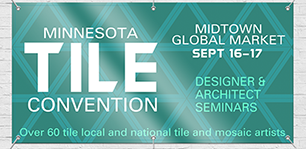Designing vinyl banners, magnetic signs, yard signs and more can be a great way to get the exact look you want, but remember, your custom signage is often the first thing associated with your business that potential customers see, so a professional-looking design is very important.
Whether using our Online Design Software or a graphics program of your own, eSigns has some tips to help you get the most from your custom design.
|
 |
Visibility
Most of our products are available in a variety of sizes. Important points to consider are choosing a sign size that is appropriate for the expected viewing distance, the location the sign will be placed, and any obstacles that may be between your sign and those viewing it. Visibility is one of the most important parts of your signage.
|
 |
Photographs and Colors
Choosing a single color scheme - such as yellow text on a black background - can give your custom banner a more finished look. Bright colors will draw attention to your sign, but overuse can take away from your message or make it hard to read. Using full color photographs is a great way to emphasize the main message. However, if text will overlap an image, the design should be checked carefully to ensure that the text will be legible.
|
 |
Foreground/Background Colors
When choosing a background for your custom design, don't use anything that will make it difficult to focus on the main message text. A color wheel will show you the importance of contrast, hue and value when choosing a foreground/background color combination. Opposite colors on the wheel a called complementary colors. For example, Red and Green are complementary colors. Such colors have very high contrast, but effectively cancel each other out, making it very difficult to read.

Colors that are next to each other on the wheel, such as blue and green, make poor color combinations since their contrast is similar in both hue and value making it hard to see. Better color combinations are usually found using colors that are not opposite or adjacent on the color wheel, such as blue and yellow. Black works well with any light color and white works well with darker colors. For example, yellow and black are a good combination because they are different in the contrast of both hue and value.
Highest visibility color combinations to use on your sign according to the Outdoor Advertising Association of America (OAAA) is as follows:

|
|
 |
Overall Design
Are you creating a single-use, event-specific sign, or a sign for use in a variety of settings? A sign that will be used indoors and viewed at short distances, or a sign that will be used outdoors and viewed from a greater distance? Answering these questions can help you in deciding on what font and effects to use for your text, colors, backgrounds, and images in your custom sign design.
|
 |
Less is More
When creating your design, less can be more! Leaving space around the edges of your design elements and not filling all of the space with your text and images will add impact to your design. Placing too much material into a design will make it appear crowded, and more difficult to read. We recommend using just the essential information about your company or event - such as the name, and basic contact information (telephone number, web or email address, and street address), instead of everything about your event. Keeping the design clear and concise is recommended. According to the United States Sign Council (USSC), the best results will come from a sign that is about 40% text and 60% blank space.

|
 |
Type and Fonts
The overall legibility of a sign is essentially determined by the height, color, and font characteristics of the text. The following chart from the USSC will help you to determine what size type is needed for your custom sign.

Limit the number of fonts used in your design to just one or two. Choosing two fonts that complement each other can make your message stand out. Be sure to use fonts that are clearly legible when viewed from a distance. Here are some examples of some standard highly legible fonts.

|
|









